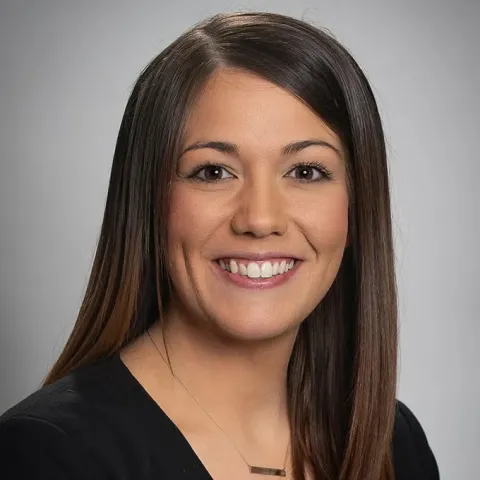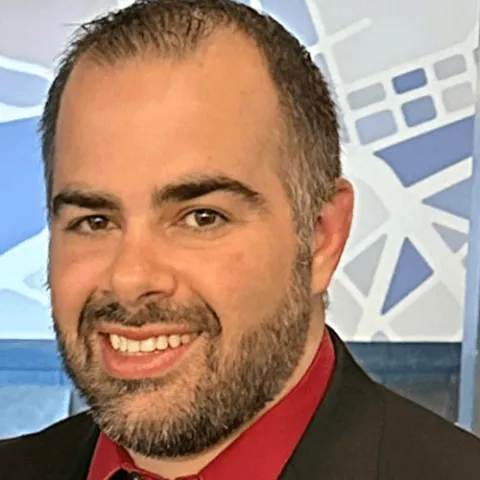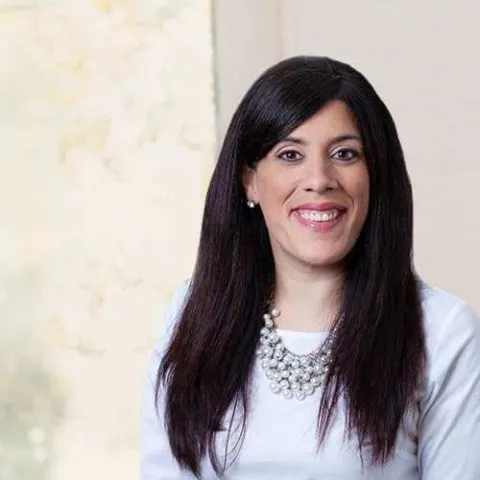
Ed.D. vs. Ph.D.: What’s the Difference?
Professionals in fields like higher education and healthcare who want to continue to grow in their careers often consider further education. However, for the aspiring leader or educator who already holds a master’s degree, the question to consider is: what is the difference between an Ed.D. and Ph.D.?
While these degree programs have some overlap, they are distinct in their coursework and intended outcomes. Understanding these differences can help professionals choose the right program for them and ensure that their degree choice aligns with their professional goals. For example, a Ph.D. is research-intensive, while an Ed.D. is practitioner-based. The differences don’t stop there — the number of credit hours, program length, and goal of student projects vary between the Ph.D. and Ed.D. as well.
Consider the similarities and differences between the Ph.D. and Ed.D. to discover the best program for your professional path.
What is a Ph.D.?
A Ph.D., which is short for Doctor of Philosophy, is an academic degree that is heavily focused on research, data, and theory. A Ph.D. is the most advanced degree an individual can earn in a given area of study or professional field, also known as a terminal degree.
Typically, a Ph.D. program prepares students for faculty and/or researcher roles. While some graduates work as practitioners, most Ph.D.-holders tend to choose occupations in areas like academia or theoretical development.
Ph.D. programs usually feature around 90 credit hours and tend to take five or more years to complete.
What is an Ed.D.?
Short for Doctor of Education, an Ed.D. is a practitioner-focused doctorate that is specifically designed for professionals aspiring to education leadership roles in various fields. Like the Ph.D., the Ed.D. is considered a terminal degree in the field of education.
A primary difference between the Ph.D. and Ed.D. is that the Ph.D. focuses only on research while the Ed.D. emphasizes the practical application of research. Additionally, the Ph.D. tends to prepare graduates for roles in academia, while the Ed.D. has greater cross-industry potential. For example, an Ed.D. graduate may become a scholar or faculty member, but, depending on their experience and interests, they may also pursue an industry-specific role like Nurse Educator or Chief Learning Officer.
Students can typically complete their Ed.D. program in 2–3 years. The degree plan tends to comprise around 60 credit hours.
What are the benefits of earning a Ph.D.?
For professionals who are interested in an academic career path, the Ph.D. offers several benefits. Many fields of study require that professors or researchers hold a Ph.D. in the given subject. A terminal degree is almost always required for tenure-track professor positions at most universities, and in many fields, that terminal degree is a Ph.D.
Ph.D.-holders are also seen as credible experts in their areas of research. As a result, they may be called upon to contribute further to their field by researching, writing, writing and speaking.
According to the Bureau of Labor Statistics, individuals who earn a Ph.D. also have low unemployment rates and relatively high earnings. In 2021, for example, doctoral-degree holders earned a median weekly rate of $1909 and a 1.5 percent unemployment rate. In contrast, master’s degree holders earned a median weekly rate of $1574 and faced an unemployment rate of 2.6 percent.
What are the benefits of earning an Ed.D.?
The Ed.D. is an ideal degree choice for the professional who wants to become a leader and educator in their industry field. Rather than focusing primarily on theoretical research, the Ed.D. prepares practitioners to apply research, data, and insights in the workplace.
Through coursework in educational leadership, managerial communications, and organizational behavior, Ed.D. students become equipped for the highest levels of leadership in various organizations.
Since the BLS does not distinguish between the Ph.D. and Ed.D., instead measuring the salary and unemployment standards among all doctoral degree holders, the median weekly wage of $1,909 and an unemployment rate of 1.5 percent apply here as well.
Learn more about RUO's Online Ed.D Programs
What can I do with a Ph.D.?
Individuals who earn a Ph.D. often decide to pursue career paths in academia, such as a faculty position at a college or university. Often called professors or faculty members, postsecondary teachers teach courses beyond the high school level. Often, they are also responsible for conducting ongoing research, publishing scholarly articles and books, and serving as an expert in their area of study.
As employees of a college or university, postsecondary teachers often perform job duties such as:
- Developing syllabi and course outlines
- Planning lessons, projects, quizzes, and tests
- Advising students
- Collaborating with colleagues on curriculum
Postsecondary teachers earn an average salary of $79,640 per year. Their job outlook rate is faster than average, with 12% growth expected between 2020–2030.
In addition to postsecondary teaching roles, Ph.D.-holders may also pursue opportunities as postdoctoral, academic, or professional researchers.
What can I do with an Ed.D.?
An important difference between the Ph.D. and Ed.D. is the range of practitioner-based roles available to professionals who earn an Ed.D.. Since the Ed.D. focuses on applying research and theory directly to the workplace, there are many leadership positions available to Ed.D. graduates who are already practiced in putting their knowledge to work in real-world ways.
Like Ph.D. graduates, Ed.D.-holding professionals may also become postsecondary teachers. Oftentimes, Ed.D. graduates who become faculty do so in highly practical fields like education or healthcare. They use their Ed.D. and industry knowledge to prepare the next generation of professionals in their field with both theory and practical application that directly applies to their careers.
Ed.D. graduates may also pursue industry-specific roles, each of which has specific duties, salaries, and job outlooks. A few examples include:
- Chief Learning Officer: Responsible for employee learning and development, the Chief Learning Officer develops strategies and programs that further educate and enrich a company’s employees in alignment with organizational goals and desired outcomes. The median annual wage for top executives was $98,720 in May 2021, and the projected job growth between 2020–2030 is 8 percent.
- Postsecondary Education Administrator: Working in roles like dean, provost, and registrar, postsecondary education administrators manage and direct various departments and colleges within higher education institutions. Their 2021 median pay was $96,910, and their projected job growth between 2020 and 2030 is as fast as average at 8 percent.
- Superintendent: As the highest-ranking official, a superintendent can be thought of as the chief executive officer in a school district. They oversee all academic and administrative endeavors of the elementary and secondary schools in their district. The median annual salary for Education Administrators, Kindergarten through Secondary was $98,420 in May 2021. Top executives project job growth rate between 2020 and 2030 is 8 percent.
How can I get a Ph.D.?
Individuals who are interested in a Ph.D. program first need to obtain the relevant bachelor’s or master’s degrees that are required in order to apply. Once enrolled, a Ph.D. program will require the completion of both coursework and a dissertation. While many Ph.D. programs take place in person, there are online Ph.D. programs available as well.
How can I get a Doctorate of Education?
At Rockhurst University, professionals can earn their Ed.D. degree fully online in just two years. Applicants can enroll with a master’s degree or 33 graduate credits. Upon acceptance, students will take courses and complete a doctoral capstone project that aligns with their area of concentration: Higher Education, K–12 Leadership, or Health Care Education.
Cohort-based classes support student success and facilitate positive connections between faculty and students. Recognizing that Ed.D. students are working professionals, the program is flexible, accessible, and has no travel requirement. One virtual residency and a doctoral capstone project ensure that each student is empowered to tailor their academic experience to their workplace goals and objectives.
Recent capstone projects from the program highlight the thoughtful, practical approach that characterizes the degree:
- Deferred Action for Childhood Arrivals (DACA) students in higher education (Laura Cordoba Dominguez, 2022): This research examines the experiences of DACA students in higher education. The researcher analyzes the challenges of DACA students, how they overcome these challenges, and what higher education institutions can do to help DACA students to be successful in U.S. colleges.
- Differences in the achievement of learning outcomes among various modalities at the U.S. Army (Ashley Richter, 2022): This research examines the differences in student learning outcomes amongst students who attended the US Army’s Command and General Staff College’s Staff Officers’ Course via varying modalities (including face-to-face, virtual synchronous, asynchronous, and computer-based instruction), explored possible reasons for these differences, and solutions to create equitable outcomes for all CGSOC students.
- What are the impacts of international service trips on the cultural competency and clinical skills of Doctor of Physical Therapy students? (Chris Johnson, 2022): This research evaluates the impact of international service-learning trips on the cultural competency and clinical skills of physical therapy students. The results of this study will provide insights for developing international service-learning projects in higher education.
As a Catholic, Jesuit, liberal arts university, Rockhurst University emphasizes comprehensive and supportive education that prepares students to engage the world as compassionate, thoughtful leaders. Learn more about Rockhurst’s online Ed.D. in Education and Leadership program.









